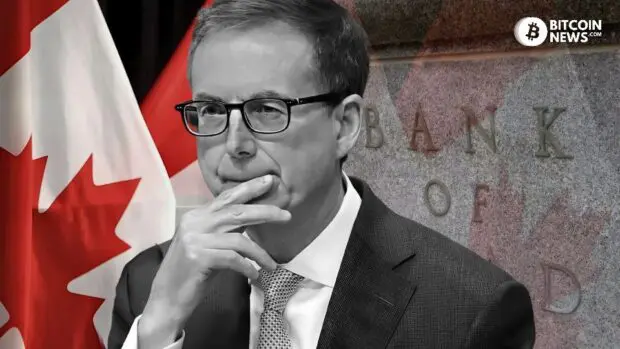In a bid to combat mounting inflationary pressures, the Bank of Canada is actively promoting wage restraint as a countermeasure, responding to a notable upswing in wage growth across Canada.
Charles St-Arnaud, the Chief Economist at Alberta Central, has voiced concerns over this wage surge, with hourly wage growth for permanent workers registering an increase of over 5%. This translates to an annualized rise of approximately 10% over just three months.
Related reading: How Your Money Is Devalued By Inflation
The central bank is contemplating two potential strategies to address this situation. One approach is for workers to consider spreading wage hikes over a more extended period, while the other involves the bank potentially raising its policy rate to put the brakes on the economy and curb wage gains.
If wage growth fails to decelerate and underlying inflationary pressures persist, the bank may again resort to policy rate hikes, if not on October 25 (interest rate announcement), then at the next rate announcement in December.
Supply Shock: A Major Concern
In general, higher wages are inflationary via two channels: supply and demand. While this rise has the capacity to inflate the economy through increased demand, it’s worth noting that despite a rise in consumer expenditures, per capita spending remains relatively restrained. This suggests that spending isn’t rising in tandem with income gains.
Related reading: Why ‘Inflation Is Transitory’ Can’t Be True
The second channel for higher wages to be inflationary—supply shock—is likely the primary source of concern for the Bank of Canada and Deputy Governor Nicolas Vincent. The rapid wage growth, without corresponding improvements in productivity or adjustments for the cost of living, contributes to increased business costs. This situation is often transferred to consumers through price hikes.
Bank of Canada’s Overly Restrictive Attitude
Compounding these concerns are shifts in pricing behavior, with firms frequently raising prices. The Central Bank’s strategy of promoting wage restraint is aimed at preventing an inflationary cycle.
However, there’s a caveat regarding the risk of monetary policy being overly restrictive. A substantial 475-basis-point increase in the policy rate has led to rising insolvencies and heightened household indebtedness, causing financial hardship for many households.
This, in turn, could result in significant job losses and potentially lead to a harsh economic downturn, posing a risk to financial stability and the potential for a deep recession.
In July, the bank stated:
“CPI inflation is forecast to hover around 3 percent for the next year before gradually declining to 2 percent in the middle of 2025.”
Meanwhile, bitcoin is achieving record-high prices in nations plagued by soaring inflation rates, such as Argentina, Egypt, Laos, and Lebanon. This surge reflects bitcoin’s appeal as a store of value in economic turmoil, drawing global attention to its performance in these countries.
Last month, the executive chairman at MicroStrategy, Michael Saylor, stated that Bitcoin is the best solution to protect wealth from risks associated with inflation and political uncertainties around the world.
Related reading:










